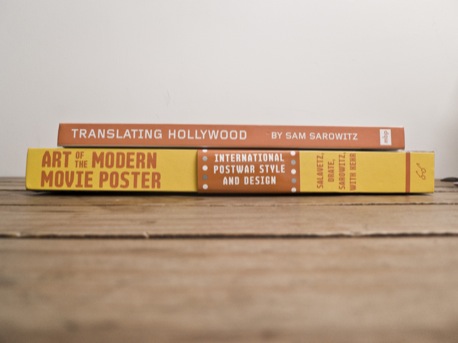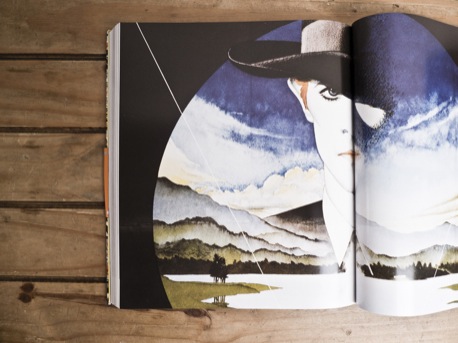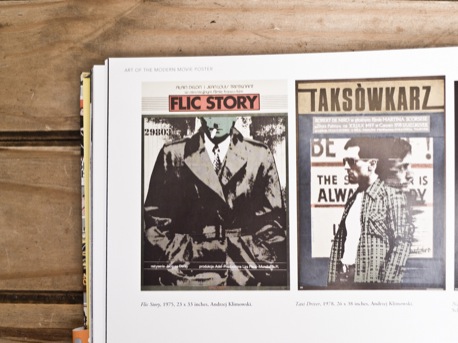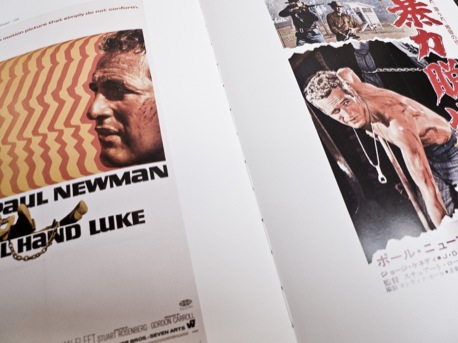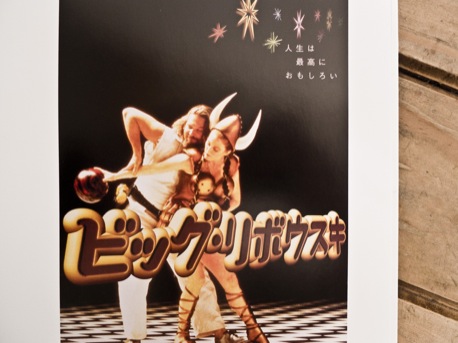Art of the Modern Movie Poster & Translating Hollywood
(Guest review by Daniel Gray)
As commercial art produced to sell another form of commercial art, film posters can often be crass, repetitive, disposable. They’re just adverts to convince you to sit in a dark room for a couple of hours, right? They’re all about big floating heads, questionable quotes from reviewers, mugging comedians accompanied by bold red text on white backgrounds, right?
Well mostly, yes. But, as with the films themselves, amidst all the dreck you’ll find the occasional poster that goes well beyond what is expected of it, a poster that deserves a life beyond the multiplex wall.
A lot of these one-sheet gems can be found in Art Of The Modern Movie Poster (Amazon US


It’s hard to open up a double-page spread of The Man Who Fell To Earth artwork without wanting to hang the whole darn book on your wall. This is where the book excels – with page after page of stunning images, it triumphs through sheer volume.
The problem is that alongside this eye-candy it would have been nice to read a bit more about the context of what you’re looking at. When it does offer some insight into the stories behind the posters – such as the few case studies scattered throughout – it leaves you wanting more. It’s not surprising to find an article on Saul Bass (accompanied by inevitably stunning, iconic work), but what about all those great poster designers who go uncelebrated?
The structure of the book does reveal some trends – the illustrative nature of Polish posters for Hollywood films, or the candy cartoonery of Japanese interpretations, for example – but this method of grouping merely seems to be a convenient way to frame the particular collections on show. The prolific film industries of India and Hong Kong are given just a couple of pages each. It almost feels like an auction catalogue.
Whereas Art Of The Modern Movie Poster takes a geographic approach to its content, Translating Hollywood (Amazon: US
|CA

Based on just one collection of posters (Sam Sarowitz again – many of the posters appear in both books), the title suggests the specific focus of the book – the translation and interpretation of artwork for different audiences. Rather than finding posters for the same film pages apart, Sarowitz groups two or three different versions on a spread, and then offers some commentary on what you’re looking at.
Without exception, this structure exposes fascinating juxtapositions. The philosophical staring-into-space, sitting about-ness of the American Cool Hand Luke poster gives way to a Japanese version dominated by the promise of sex and violence; Army Of Darkness turns from knowing heroic imagery to multicoloured pop-art (complete with Warholian cans of Bruce Campbell soup); and The Big Lebowski, well, The Big Lebowski is going to be a crazy poster no matter what language it’s in:
Both books offer plenty in the way of eye candy, but Translating Hollywood benefits hugely from actually having a central thesis. Both, however, suffer a little from their origins in dealers’ collections. When viewed as works of standalone art, as valuable artifacts in their own right, rather than their original purpose – adverts – their meaning changes. We see very little of posters from the last fifteen years, presumably because they are not yet of any great monetary value, so no modern classics like Funny Games or Lost In Translation (which would seem rather appropriate here) to bring things up to date.
This is a shame, because there is no connection to how the marketing role of film posters has changed with new technologies. You’re just as likely to see a “poster” (those quote marks becoming ever more necessary) on the Internet, linking to a trailer or a review, as you are on a bus stop. So perhaps these books are best viewed as retrospectives of an era of printed marketing, a system facing a radical shift in purpose.
If you want a dip-in coffee table book, go for Art Of The Modern Movie Poster. For a more eye-opening read, one that has something to say about the increasingly international nature of design, go for Translating Hollywood. Just don’t expect to learn much about the art of today’s film posters.
Art Of The Modern Movie Poster
Translating Hollywood – The World Of Movie Posters
You can buy Art Of The Modern Movie Poster from Amazon (US





About The Reviewer
Daniel Gray is a graphic designer living and working in York. He also writes the blog Binky the doormat and manages the Flickr group The Face (1980-2004). His favourite movie poster is the orange squiggly Cool Hand Luke one.


